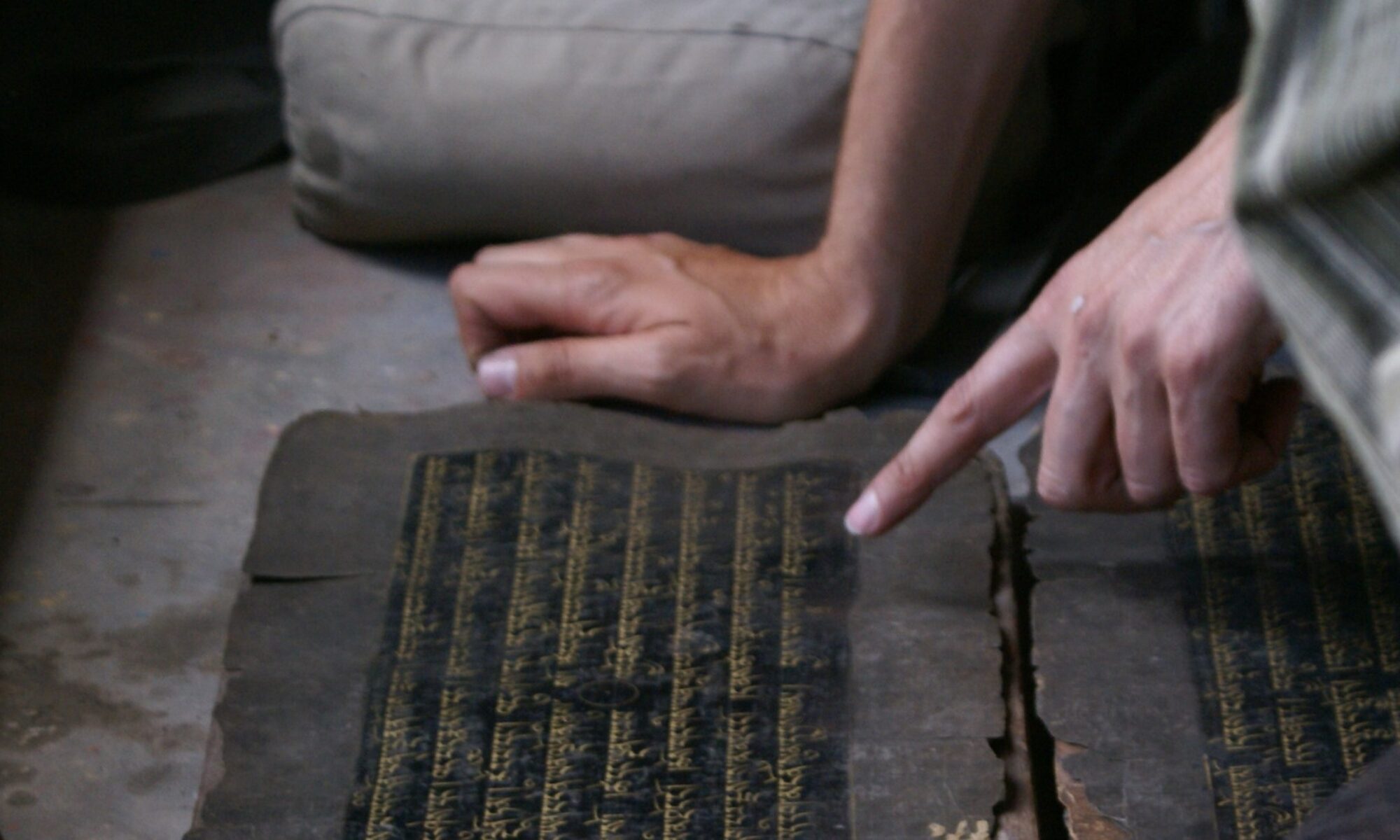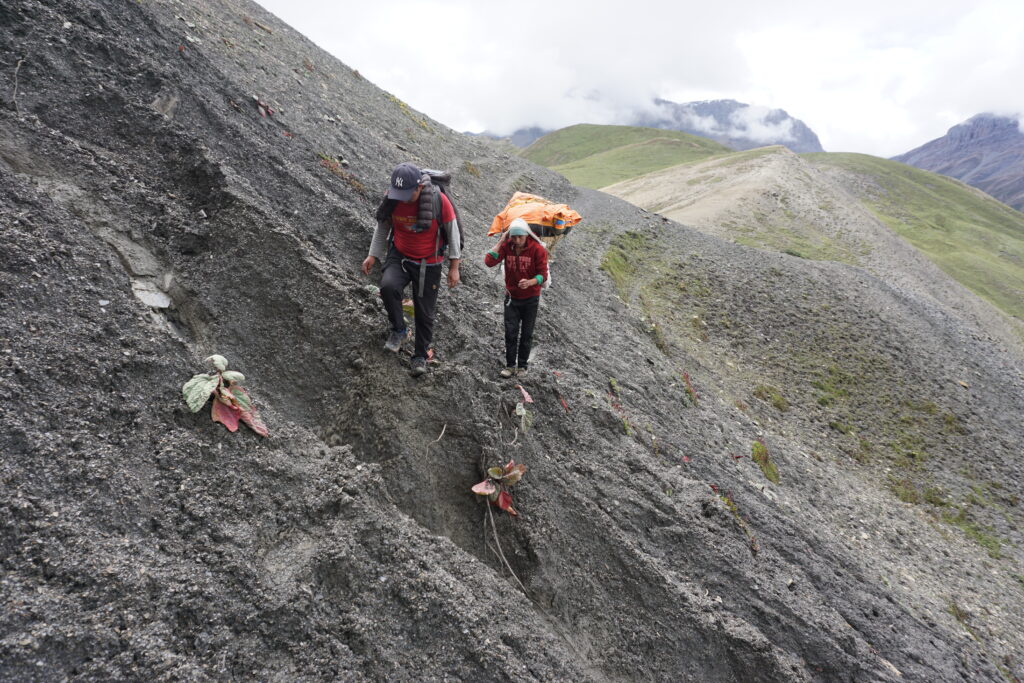
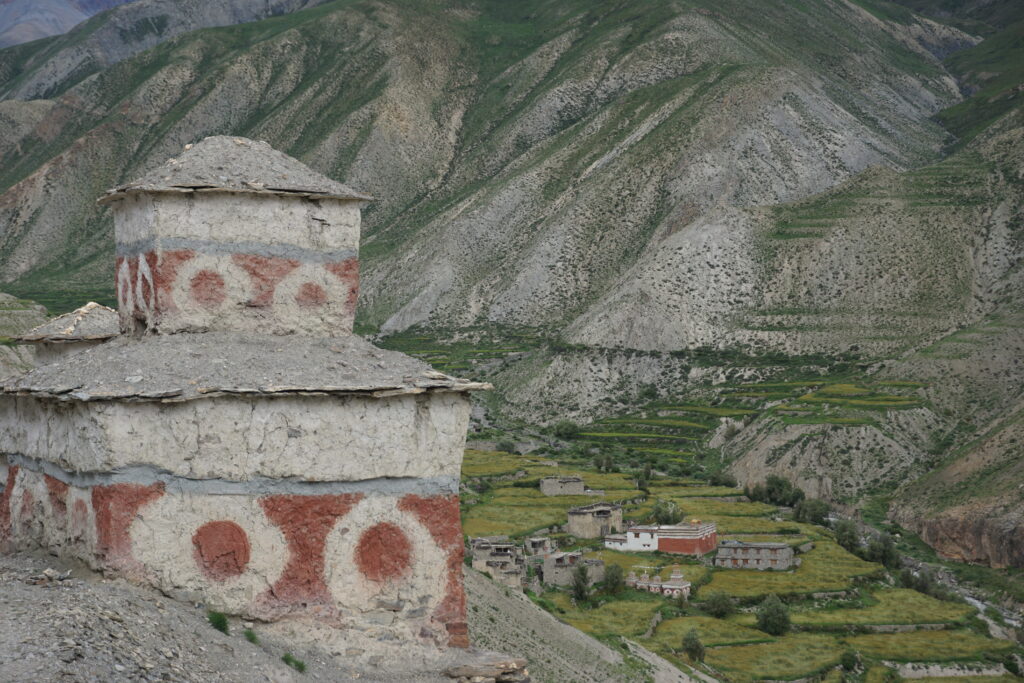
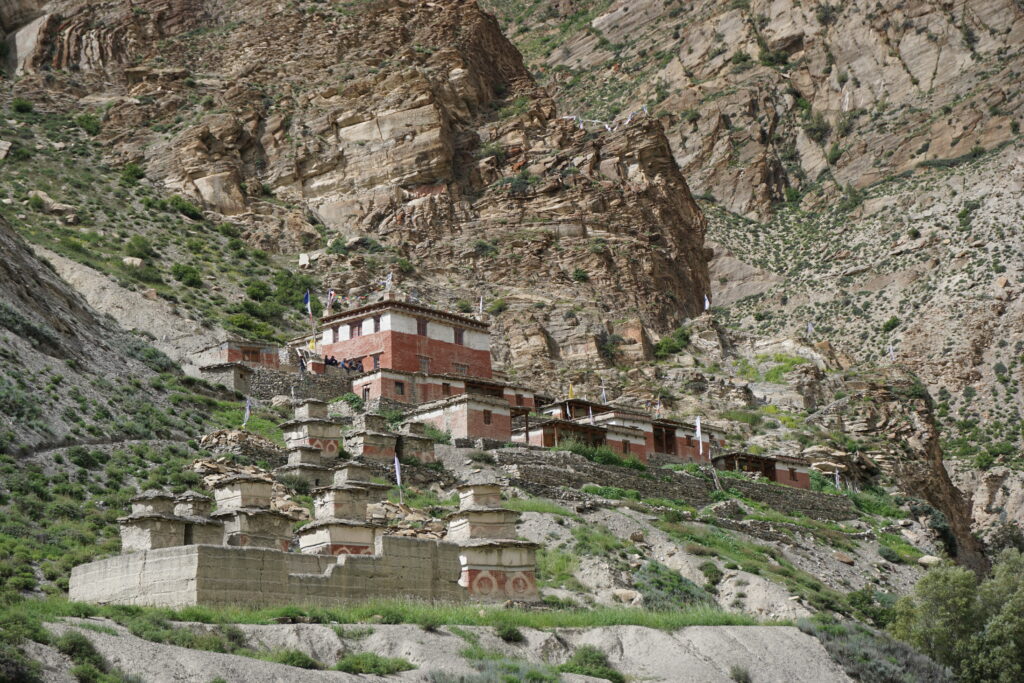
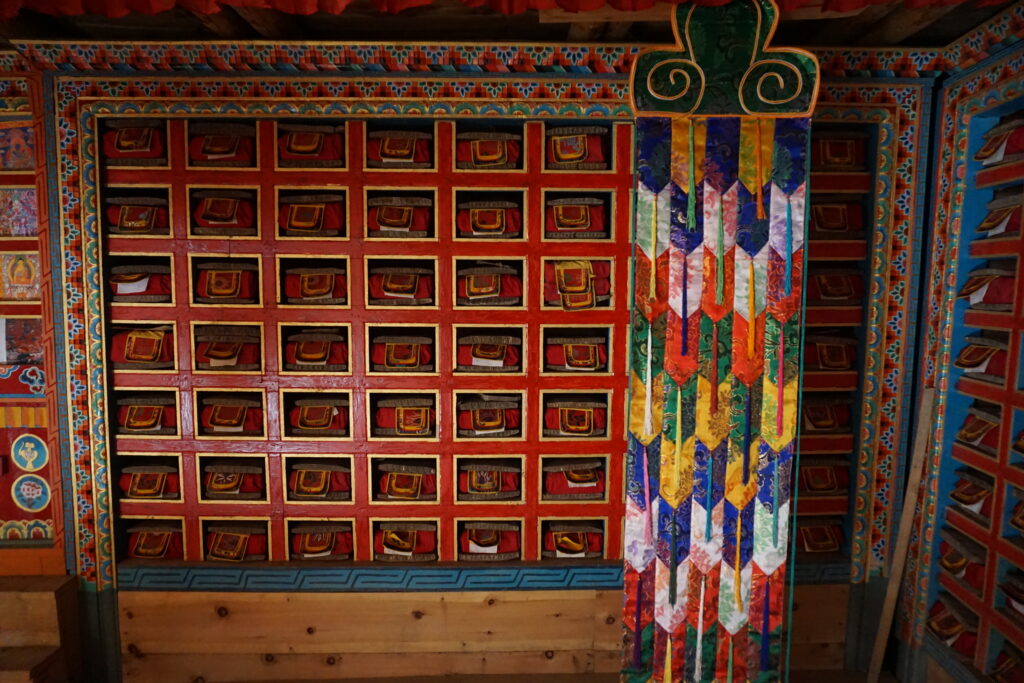
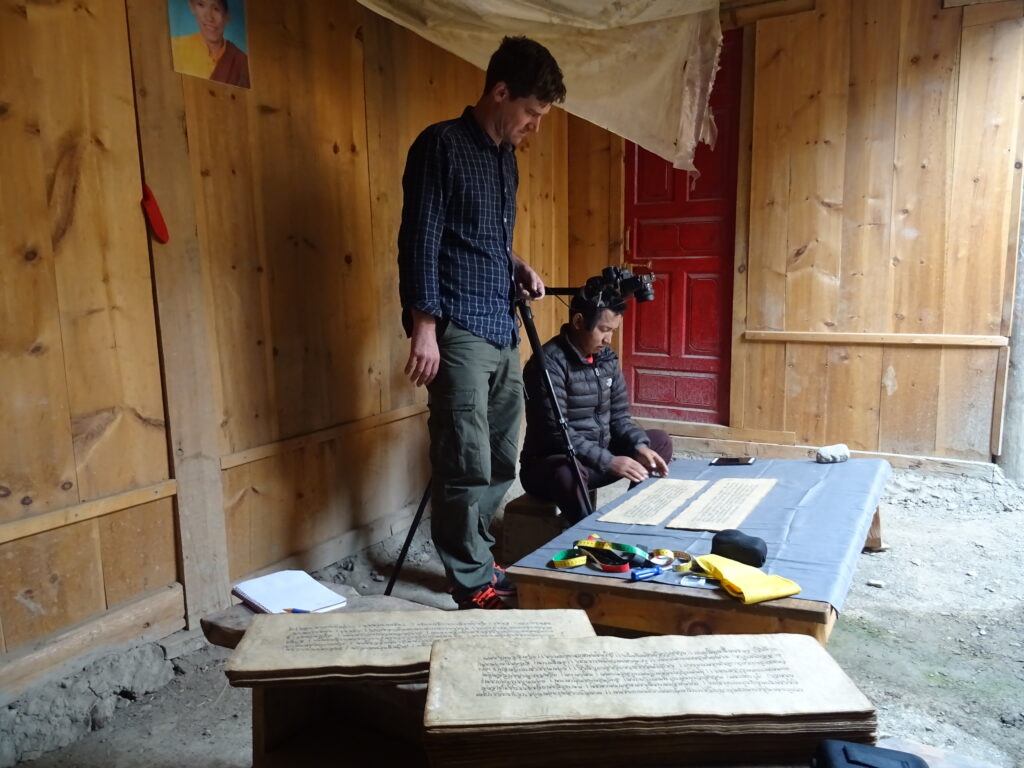
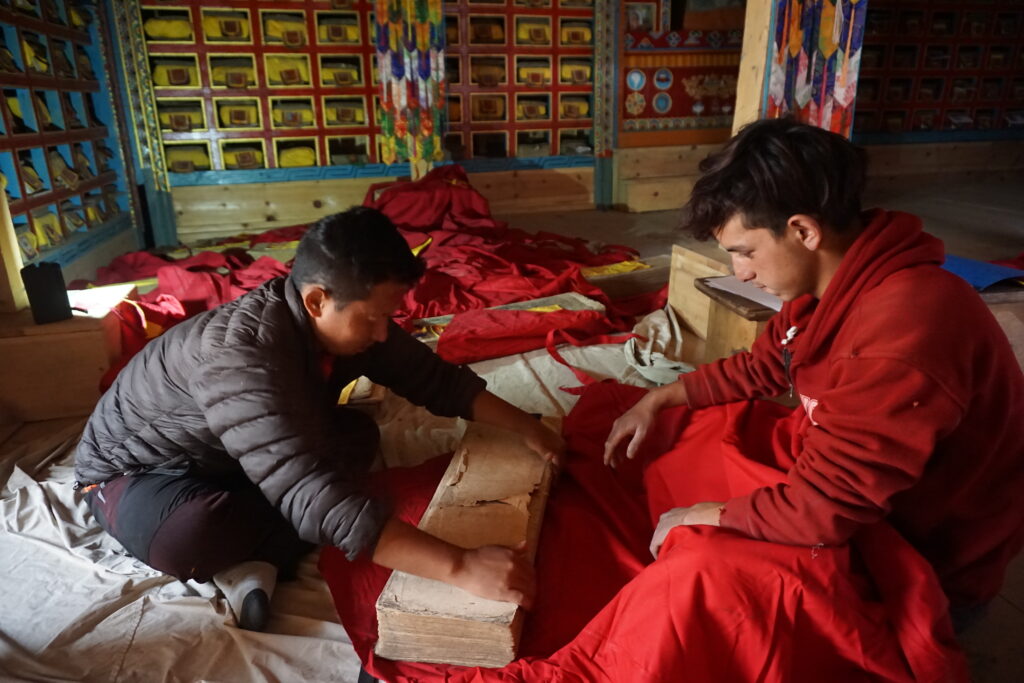
Nesar (gnas gsar) Monastery is located in the village of Bicher/Vijer in Upper Dolpo and lies at an altitude of ca. 3.800 meters. It houses an incredible treasure of older manuscripts, consisting of 642 volumes with altogether some 160.000 folios, 150 of them illuminated. A first rough handlist of these volumes was produced by Amy Heller ((Heller 2007 and 2009). As outlined by Heller, the volumes stem from three different monastic collections. Most of the volumes belonged originally to Nesar, but one collection of 98 volumes was relocated from nearby Lang (glang) Monastery and another collection of 71 volumes from nearby Serkhang (gser khang) Temple. The close connections between these monasteries were studied by Klaus-Dieter Mathes (Mathes 2003). In 2014, Tenzin Gyaltsen (bstan ‘dzin rgyal mtshan), the head lama of Nesar Monastery, kindly provided TMPV with photographs of a complete Kanjur set from Nesar. It is these 88 volumes which are referred to as “Dolpo Kanjur” in the rKTs database.
During field work in 2018, it was understood that these 88 volumes stem actually from all of the three collections of Nesar, Lang, and Serkhang, and are in that sense an artificial collection, even though close connections between textual sources from these monasteries have to be assumed. For this reason, it became necessary to document the entire collection in a systematic fashion and to digitize all volumes that had not been photographed before. In August & September 2018, the entirety of 98 volumes of the canonical manuscripts from Lang Monastery (L1-L98 in Amy Heller’s initial inventory from 2009) was digitised. Similar to other collections in the region, the oldest and most substantial part of the manuscripts is constituted by sets of the Śatasāhasrikāprajñāpāramitāsūtra (‘bum) and by Sūtra collections, or fragments of these. The textual contents and structure of the Sūtra collections seem to represent a stage of canonical development that preceded the model of later structured Kanjurs (as argued in Viehbeck 2020 and Luczanits and Viehbeck 2021). Images of the manuscripts as well as catalogue data is implemented in the rKTs archive under the siglum Lg (Lang).
